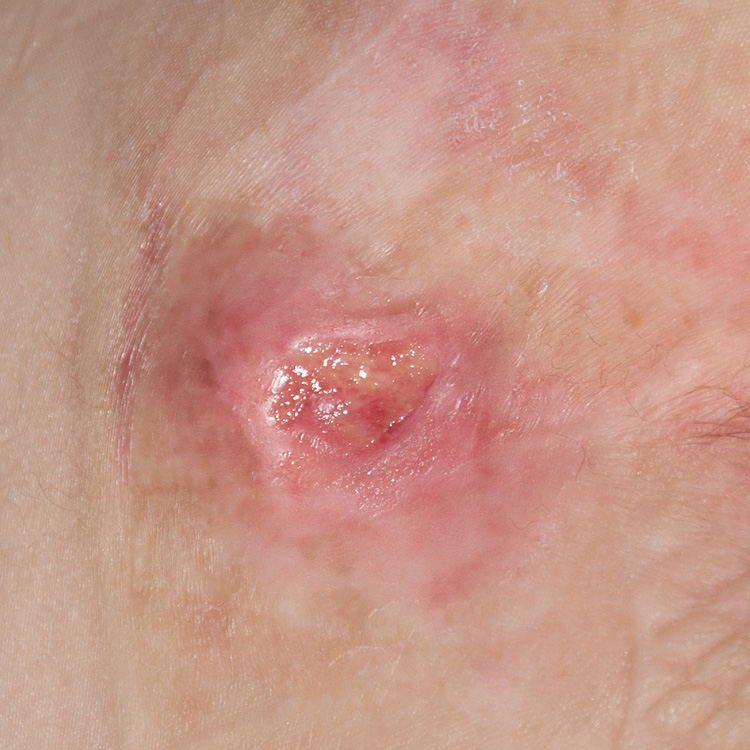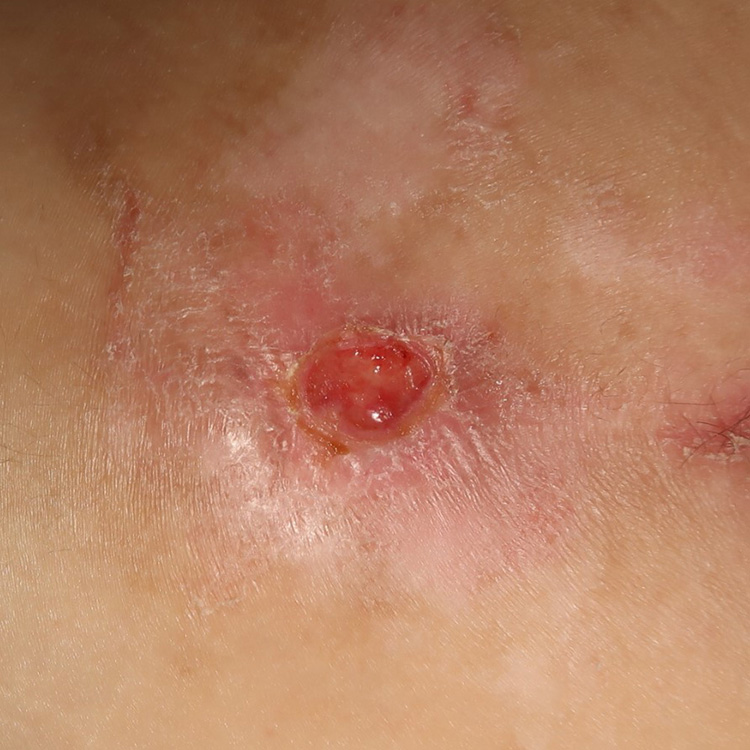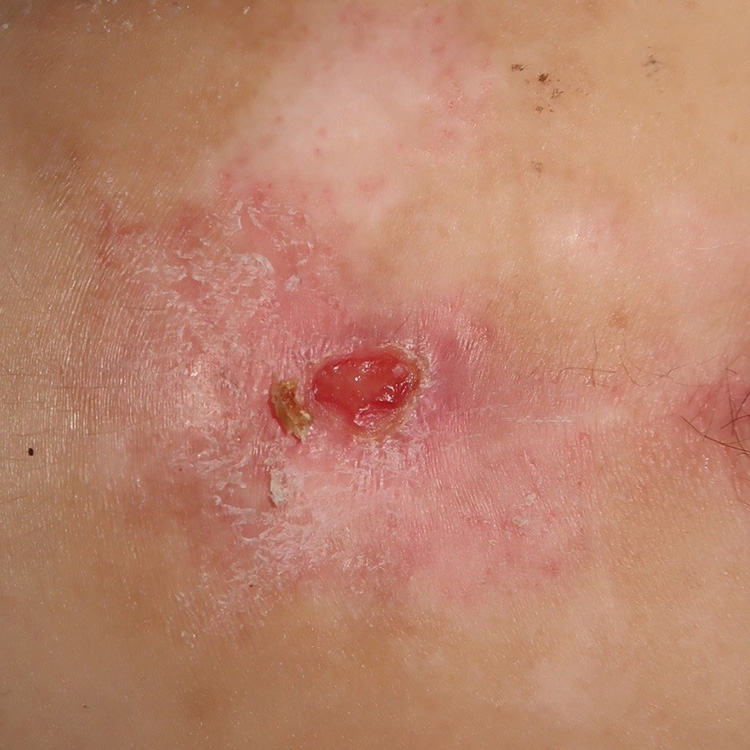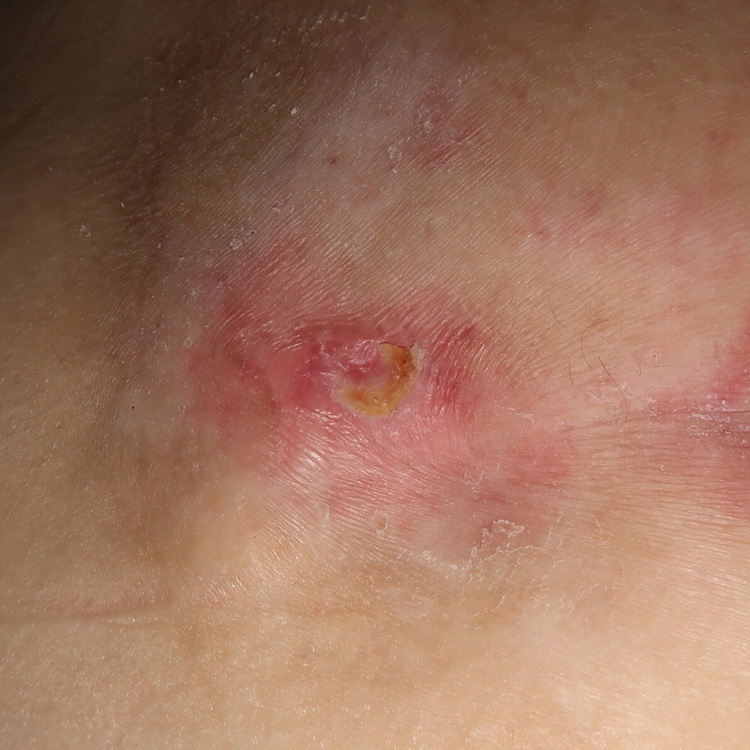Patient was a woman in her late thirties C5 complete quadriplegic, 20 years paralysed. The pressure ulcer was a category 2 of 1.5cm x 1.4cm below the sacral area and had been persistent for 2 years. It had no tunnelling and undermining. It had once closed, however only to reopen. The patient had been on bed-rest for the 6 weeks period prior to Amicapsil. Judging only from what was apparent to the naked eye, the ulcer seemed covered with a layer of tenacious biofilm.
Amicapsil was applied once daily for three days (Day 0, 1 and 2). For the entire period until full closure, the wound was cleaned thoroughly daily with plenty of clean water (shower) and dabbed dry very gently. The wound was either left uncovered or covered with a plain gauze or an N-A (dry, permeable contact layer dressing) of the patient’s choice depending on the immediate activity that was to be undertaken. The patient was encouraged to leave the ulcer to the air as much as possible. She was also encouraged not to sit or lie on the wound but still to get out of bed for moderate amounts of time – with good use of cushions etc. Amicapsil was applied once more later in the healing process, due to unforeseen circumstances. It immediately restarted healing.
It was evident that the biofilm disappeared within the first 2 days together with a small amount of non-viable tissue – this tidying process necessarily leaving the wound opening a tiny bit wider and deeper than before first application. The biofilm is a sign of the microbes having gained a strong foothold with infiltration of the deeper and surrounding areas by a variety of infecting agents. The tissue infiltration was gradually cleared over the following days. It was recognizable by the stretching and pulling of the surrounding skin as well as the flakes and scales appearing on the surrounding skin. The flakes and scales are a sign that the skin and the underlying tissue is regenerating and being substituted for healthier skin appearing rapidly underneath. The flakes and scales should be left in peace to fall off in their own time, which will be when the new skin underneath is sufficiently mature. After full closure of the actual skin opening, the wound, the skin continues to mature for approximately 6 weeks. It was also evident how the regeneration of soft tissue would also continue to progress underneath the new skin. This process is likely to take a similar amount of time.
The ulcer was fully closed (epithelialised) on Day 17.
Patient’s statement on Day 17: “It is amazing stuff that Acapsil” VH


















